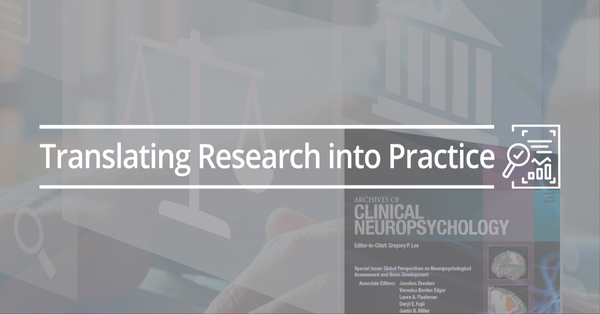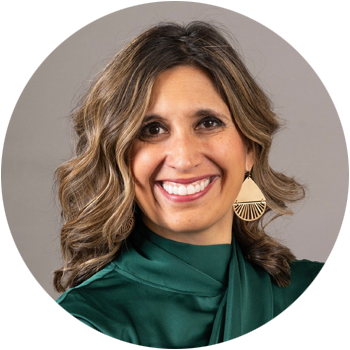Featured Article
Article Title
Retainer Bias: Ethical and Practical Considerations for the Forensic Neuropsychologist
Authors
Diana S. Goldstein - Michigan Avenue Neuropsychologists, 65 East Wacker Place, Suite 2240, Chicago, IL 60601, USA
Joel E. Morgan - 2 Independent Practice, 250 Madison Avenue, Suite 200, Morristown, NJ 07960, USA
Abstract
How is it that practicing forensic neuropsychologists occasionally see substandard work from other colleagues, or more fundamentally, have such disparate opinions on the same case? One answer might be that in every profession, competence varies. Another possibility has little to do with competence, but professional conduct. In this paper we discuss the process by which retainer bias may occur. Retainer bias is a form of confirmatory bias, i.e., in assessment, the tendency to seek, favor, and interpret data and make judgments and decisions that support a predetermined expectation or hypothesis, ignoring or dismissing data that challenge that hypothesis (Nickerson, 1998). The tendency to interpret data in support of the retaining attorney’s position of advocacy may be intentional– that is, within conscious awareness and explicit, or it may be unintentional, outside of one’s awareness, representing implicit bias. While some practitioners accept referrals from both sides in litigation, numerous uncontrollable factors converge in such a manner that one’s practice may nevertheless become associated with one side. Such imbalance is not a reliable index of bias. With brief hypothetical scenarios, in this paper we discuss contextual factors that increase risk for retainer bias and problematic practice approaches that may be used to support one side in litigation, violating ethical principles, codes of conduct, and guidelines for engaging in forensic work. We also discuss debiasing techniques recommended within the empirical literature and call on the subspecialty field of forensic neuropsychology to conduct research into retainer bias and other sources of opinion variability.
Keywords
Retainer bias; confirmatory bias; debiasing techniques; forensic neuropsychology; professional issues; ethics
Summary of Research
“Most investigations have examined the question of bias because opinion accuracy… cannot truly be known. Determining if and how the presence, nature and extent of acquired neurocognitive disorders affect these psycholegal concepts or translate to “damages” in the civil arena, is the equivalent challenge in forensic neuropsychological practice… There are many forms of cognitive bias that can affect clinical decision-making. Perhaps the most pernicious is confirmatory bias, in which the clinician selectively gathers, places greater weight on, and interprets data in support of a predetermined hypothesis, even a conclusion, neglecting contradictory evidence. Contributory factors include preexisting beliefs, expectations, motives and contextual factors….
Retainer bias can potentially affect forensic experts of any specialty, but we focus solely on neuropsychology in this paper… Retainer bias in forensic neuropsychological examinations has serious consequences for the litigation process, as it can contaminate opinions and testimony, affect subsequent forensic examiners who read our reports or testimony, and ultimately influence fact-finders in their decision-making. We must constantly be vigilant to it and take preventative steps against it” (p. 175- 176).
“The forensic practitioner gives appropriate weight to different types of evidence, and when critical documentation is unavailable, makes known what effect this may have on opinions…. The best approach by the forensic practitioner is to insist the record be sent in its entirety, in an organized manner, and to conduct one’s own comprehensive review…The independent review is critical and the forensic practitioner may need to remind the retaining party the expert’s credibility is just as critical…
The forensic practitioner recognizes that treating medical and mental health clinicians may never see prior records and often rely solely on self-report in their diagnostic decision-making, and that it is not the job of a treater to question their patient critically; treaters may unwittingly contribute to misdiagnosis for which various diagnostic testing and treatment are unnecessary. The forensic practitioner’s job is one of fact-checking, including the consistency of self-report” (p. 178)
“Forensic practitioners are required to make reasonable efforts to ensure their work is communicated in a way that promotes understanding and avoids deception, to offer a complete statement of all relevant opinions formed within the scope of their work, to guard against misuse of their services, to inform those who retain us that we cannot provide services inconsistent with our professional obligations, and to attempt to resolve conflicts in line with our professional obligations. In practice, a good cross examination will shed light on the full range of the practitioner’s examination procedures, diagnostic conclusions and opinions, easily impeaching their credibility and potentially disqualifying their testimony as evidence” (p. 178- 180).
“It goes without saying this is a difficult position in which to find oneself as an expert. It also goes without saying that short of a conscious decision to ignore new data contrary to one’s opinion, the forensic practitioner here is at high risk for anchoring to set in… The final inquiry must be whether any of these answers would change whether the practitioner is retained by the opposing side…
If a forensic neuropsychologist finds themselves rarely suspecting malingering, it is time for some introspection regarding retainer bias and/or difficulty removing one's clinical hat in a forensic role. If one is unwilling to conclude malingering to a reasonable degree of neuropsychological certainty, consider whether malingering can reasonably be ruled out based on available data. If not, offer that very opinion.
A forensic neuropsychologist that always determines malingering should also check the mirror. Maintaining a database of one’s base rate of malingering determinations is recommended practice by the authors, so that we can testify to such numbers before fact-finders determining our credibility as experts” (p. 182- 183).
“In this paper we have presented a number of scenarios the forensic practitioner is likely to encounter illustrating how explicit attorney demands and/or implicit expectations may set retainer bias in motion. We have discussed transgressions of ethical conduct and offered suggestions for reducing bias, all in an effort to increase practitioners’ awareness of these issues. As regulatory boards and committees are unlikely to become involved in cases with less than egregious misconduct, monitoring of forensic neuropsychological practitioners falls to each individual clinician” (p. 184),
Retainer bias can potentially affect forensic experts of any specialty, but we focus solely on neuropsychology in this paper… Retainer bias in forensic neuropsychological examinations has serious consequences for the litigation process, as it can contaminate opinions and testimony, affect subsequent forensic examiners who read our reports or testimony, and ultimately influence fact-finders in their decision-making. We must constantly be vigilant to it and take preventative steps against it” (p. 175- 176).
“The forensic practitioner gives appropriate weight to different types of evidence, and when critical documentation is unavailable, makes known what effect this may have on opinions…. The best approach by the forensic practitioner is to insist the record be sent in its entirety, in an organized manner, and to conduct one’s own comprehensive review…The independent review is critical and the forensic practitioner may need to remind the retaining party the expert’s credibility is just as critical…
The forensic practitioner recognizes that treating medical and mental health clinicians may never see prior records and often rely solely on self-report in their diagnostic decision-making, and that it is not the job of a treater to question their patient critically; treaters may unwittingly contribute to misdiagnosis for which various diagnostic testing and treatment are unnecessary. The forensic practitioner’s job is one of fact-checking, including the consistency of self-report” (p. 178)
“Forensic practitioners are required to make reasonable efforts to ensure their work is communicated in a way that promotes understanding and avoids deception, to offer a complete statement of all relevant opinions formed within the scope of their work, to guard against misuse of their services, to inform those who retain us that we cannot provide services inconsistent with our professional obligations, and to attempt to resolve conflicts in line with our professional obligations. In practice, a good cross examination will shed light on the full range of the practitioner’s examination procedures, diagnostic conclusions and opinions, easily impeaching their credibility and potentially disqualifying their testimony as evidence” (p. 178- 180).
“It goes without saying this is a difficult position in which to find oneself as an expert. It also goes without saying that short of a conscious decision to ignore new data contrary to one’s opinion, the forensic practitioner here is at high risk for anchoring to set in… The final inquiry must be whether any of these answers would change whether the practitioner is retained by the opposing side…
If a forensic neuropsychologist finds themselves rarely suspecting malingering, it is time for some introspection regarding retainer bias and/or difficulty removing one's clinical hat in a forensic role. If one is unwilling to conclude malingering to a reasonable degree of neuropsychological certainty, consider whether malingering can reasonably be ruled out based on available data. If not, offer that very opinion.
A forensic neuropsychologist that always determines malingering should also check the mirror. Maintaining a database of one’s base rate of malingering determinations is recommended practice by the authors, so that we can testify to such numbers before fact-finders determining our credibility as experts” (p. 182- 183).
“In this paper we have presented a number of scenarios the forensic practitioner is likely to encounter illustrating how explicit attorney demands and/or implicit expectations may set retainer bias in motion. We have discussed transgressions of ethical conduct and offered suggestions for reducing bias, all in an effort to increase practitioners’ awareness of these issues. As regulatory boards and committees are unlikely to become involved in cases with less than egregious misconduct, monitoring of forensic neuropsychological practitioners falls to each individual clinician” (p. 184),
Translating Research into Practice
“The problem is, there may be no evidence for a history of intellectual disability, so the practice of using demographically uncorrected test norms is circular in logic and biased. These clinical approaches have a direct affect on court decisions regarding eligibility for a death penalty and should always be described transparently in one’s forensic report and testimony. Lawyers may directly ask about the forensic practitioner’s willingness to employ such methodologies at the start of a case, or the practitioner may find themselves having to guard against the manipulation of their test findings during a hearing. We must always be prepared to explain our positions clearly and reliably and guard against such misuses” (p. 182).
“Avoid emotional and biased language in reports.
Actively disengage emotionally from casework, be wary of developing empathy for examinees, and be aware of countertransference.
Assess patterns of decision-making over time…
Engage in “straight talk” with the attorney when your exam findings are unlikely to be helpful and provide such feedback expeditiously…
Obtain all pre- and post-incident records…
Indicate in the report when records were requested but not received—this promotes transparency…
Conduct your own record review…
Use systematic, structured, or semi-structured clinical and diagnostic interviews that support DSM diagnoses and risk assessments to reduce the likelihood of incomplete or biased lines of questioning, data integration and interpretation…
Recognize reliance on memory may operationalize certain biases…
Systematically examine the current DSM criteria whereas reviewing notes…
Assess the independence of different pieces of evidence [and] don’t confuse correlation with causation” (p. 185).
“Avoid emotional and biased language in reports.
Actively disengage emotionally from casework, be wary of developing empathy for examinees, and be aware of countertransference.
Assess patterns of decision-making over time…
Engage in “straight talk” with the attorney when your exam findings are unlikely to be helpful and provide such feedback expeditiously…
Obtain all pre- and post-incident records…
Indicate in the report when records were requested but not received—this promotes transparency…
Conduct your own record review…
Use systematic, structured, or semi-structured clinical and diagnostic interviews that support DSM diagnoses and risk assessments to reduce the likelihood of incomplete or biased lines of questioning, data integration and interpretation…
Recognize reliance on memory may operationalize certain biases…
Systematically examine the current DSM criteria whereas reviewing notes…
Assess the independence of different pieces of evidence [and] don’t confuse correlation with causation” (p. 185).
Other Interesting Tidbits for Researchers and Clinicians
“The forensic neuropsychologist must be prepared to explain to the lawyer the reasons they have arrived at their opinions in the first place and the weaknesses (if not outright deception) in the new opinion being sought. Changing one’s opinion may be attractive in the short run to prevent conflict or the loss of a particular referral source, but in the grander scheme of one’s career the risk for harm to an individual or organization, impeachment and a reputation for bias, are far more destructive” (p. 180).
“Educating an attorney how to best bring out errors or weaknesses in a case analysis can be a very satisfying [job]… the field of forensic psychology has long pointed to a conflict of interest in serving both as testifying expert and trial consultant, suggesting “team membership” and advocacy is operational in the role of forensic consultant” (p. 184).
“Educating an attorney how to best bring out errors or weaknesses in a case analysis can be a very satisfying [job]… the field of forensic psychology has long pointed to a conflict of interest in serving both as testifying expert and trial consultant, suggesting “team membership” and advocacy is operational in the role of forensic consultant” (p. 184).
Additional Resources/Programs
As always, please join the discussion below if you have thoughts or comments to add!
- How to Become Forensic Board Certified
- How COVID-19 Changed the Landscape of Forensic Evaluations: The Utility and Future of Telehealth in Examinations
- “But That’s Just Twitter, Right?” Skepticism About the Use of Social Media Data in Forensic Evaluations
- Competency and Community – A Radical Alternative?












